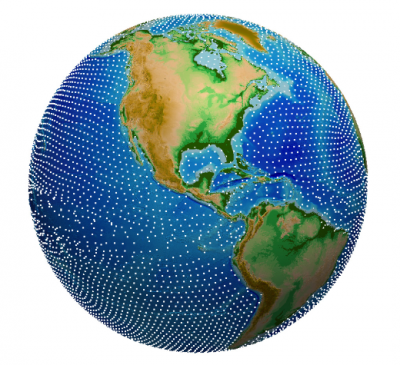Analyzing Ocean Mixing at Exascale: Lagrangian, in Situ, Global, High-Performance Particle Tracking (LIGHT)
The LIGHT software provides a new capability to analyze ocean mixing within the Energy Exascale Earth System Model (E3SM), which simulates the interactions of atmosphere, ocean, land, and ice components of the global earth system. The particle tracking is performed within the ocean component, making it more computationally efficient than other approaches (like data post processing), and the “virtual” particle floats follow the natural motion of ocean currents, making it more accurate than other approaches.
LIGHT computes individual float trajectories by first interpolating velocity fields vertically, for example along isopycnal (constant-density) surfaces. Lateral motions are computed from interpolation3 of the horizontal velocity field and temporal integration is performed by a generalized Runge-Kutta method. Operations are implemented for highly parallel computers, allowing LIGHT to be applied in the highest-resolution ocean simulations.
LIGHT brings a best-in-class ocean diagnostic capability to E3SM. When applied to other E3SM components, LIGHT will foster a better understanding of the global water cycle.

